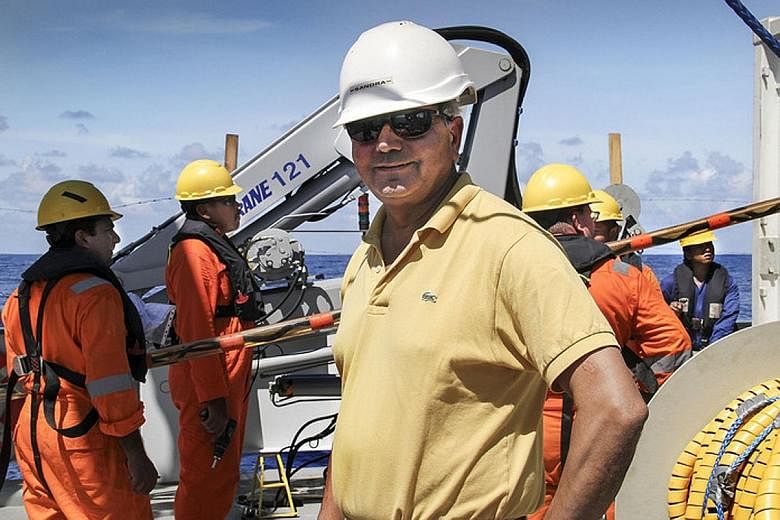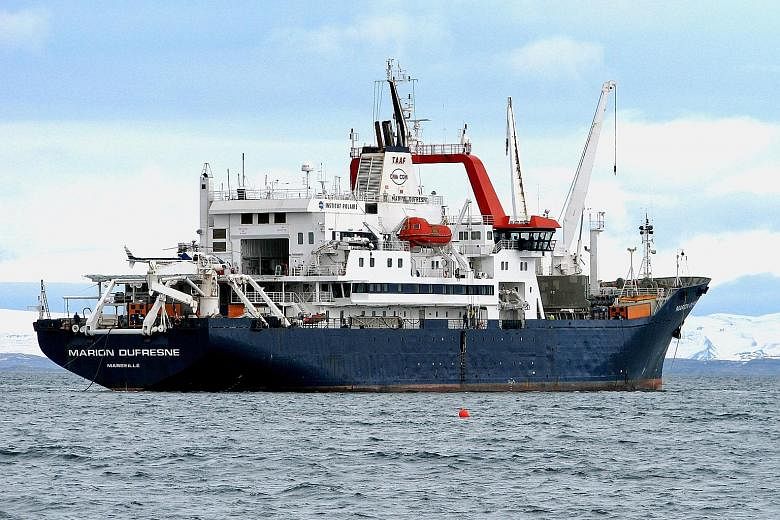A university-led international expedition sets sail today to shed light on mysterious earthquakes.
Helmed by Professor Satish Singh, a visiting professor at the Nanyang Technological University's (NTU) Earth Observatory of Singapore (EOS), the team will cover at least 150,000 sq km - an area bigger than 200 Singapores - to understand why two massive earthquakes in 2012 shook the seas off Indonesia in an area that was not previously known to have large temblors.
While huge quakes tend to occur along the boundaries of tectonic plates as they shift, the two that struck that April - one of magnitude 8.6 and an aftershock of magnitude 8.2 - occurred within the boundaries of existing plates.
"Our research suggests that there might be a plate boundary between India and Australia that is being created as we speak," said Prof Singh, who is a full professor at French research body Institut de Physique du Globe de Paris.
That is why he is leading the third expedition of its kind to study the earthquakes. With him are 34 scientists, three of whom are also from EOS, and 15 students, one of whom is from the National University of Singapore.
Their one-month expedition takes place on French research ship Marion Dufresne. At about 120m long, the vessel is slightly less than half the length of the Titanic.
The Marine Investigation of the Rupture Anatomy of the 2012 Great Earthquake, abbreviated to Mirage, will map and study the ocean bed off the north-western coast of Indonesia, and will also drill up to 50km beneath the sea floor to accurately map the tectonic plate structure of the area.
-
34 Number of scientists with Professor Satish Singh on the expedition. There are also 15 students.
The previous expedition last year, also led by NTU, penetrated only up to 30m beneath the sea floor. Said Prof Singh: "Last year, we saw the face on the seabed, but now we want to look at the heart of where earthquakes occur."
NTU is funding €1.5 million (S$2.4 million) of the €5 million mission, with the rest of the money coming from France. Singapore will provide expertise in tectonics - the study of how the earth's crust moves and behaves. Prof Singh and the rest of the French researchers will contribute their knowledge in marine geology and geophysics.
Aside from EOS, the other two institutions involved are the French research institute and the Indonesian Institute of Sciences (Lipi).
Also on the ship will be a "floating summer school" that will provide practical experience to students from Asean countries in marine geoscience and data analysis.
Dr Nugroho Hananto from Lipi said the expedition will help researchers understand why the magnitude-8.6 earthquake in 2012 generated no tsunami, despite being one of the largest recorded in the ocean.
He said: "With the Asian region being a hotbed of tectonic activity, it is important for us to conduct research to discover which earthquakes can lead to tsunamis and why. This can better prepare scientists and policymakers for future natural disasters that communities will face."
When asked how he felt about the mission, Prof Singh said: "We have been working on this for the last few years. We made a proposal in 2013 and it's exciting to get this done. And looking for the science - it's a fundamental discovery we are making, and science is very, very exciting."



